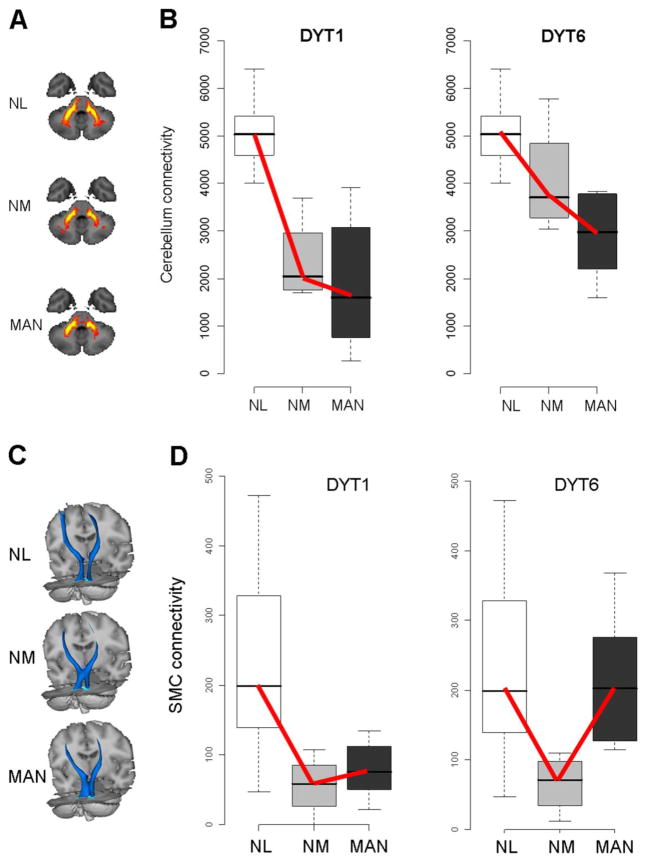Figure 1. Reduced cerebellar outflow (A, B) and thalamocortical (C, D) connectivity in dystonia gene carriers.
A. Two-dimensional projections of the group mean probabilistic connectivity tracts generated from seed masks in normal control subjects (NL, n=8), and in non-manifesting (NM, n=8) and manifesting (MAN, n=12) dystonia mutation carriers. Reduced fiber tract integrity is evident in the proximal portion of the cerebellar outflow pathway in the NM and MAN groups. B. Connectivity values measured in a significant white matter cluster identified by comparing cerebello-thalamo-cortical tracts in dystonia mutation carriers with controls (Argyelan et al., 2009). Connectivity in this region was abnormally reduced in both NM and MAN gene carriers (p<0.01 and p<0.001, Mann-Whitney U tests). A significant decreasing group-wise trend (NL>NM>MAN) was present in both the DYT1 (left) and DYT6 (right) carriers across the three groups (p<0.001 and p=0.002 for the two genotypes; tests of trends). C. Three-dimensional displays of the group mean probabilistic connectivity tracts generated from seed masks in the same subjects. The size of this fiber tract is reduced distally, most pronounced in the non-manifesting carriers. D. Connectivity values measured in a significant cluster identified by comparing cerebello-thalamo-cortical tracts in NM mutation carriers with controls (Argyelan et al., 2009). This cluster was localized to the distal segment of the pathway in the subgyral white matter of the precentral region. A different group-wise trend (NL>MAN>NM) was evident for this cluster in the DYT1 (left) and DYT6 (right) carriers (p<0.002 and p=0.0025 for the two genotypes; tests of trends).
[A-D: Adapted from J Neurosci, Cerebellothalamocortical connectivity regulates penetrance in dystonia, 9740-9747, Copyright 2009, with permission from the Society for Neuroscience.]

